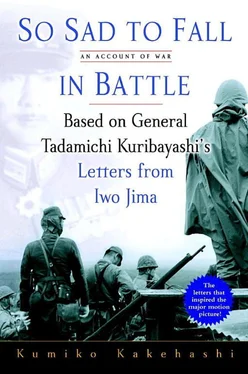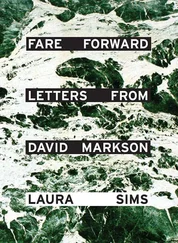The furious flames sucked the oxygen out of the atmosphere and some people suffocated to death. People who had taken refuge in buildings made of reinforced concrete like schools, which were thought to be safe, were incinerated by the fire, which blew in with the power of a bomb blast. The rivers were choked with the corpses of people who had leaped in to escape from the inferno of scorching heat.
The night sky reflected the fire raging below and became as bright as day. The raid lasted two and a half hours, and when the crews of the B-29s looked back as they headed home, they could still see the sky above Tokyo glowing white from 300 kilometers away.
Two B-29s that had sustained damage in the Tokyo bombing landed on the runway of Iwo Jima on the way back. Another fourteen planes ditched into the sea nearby, and five of their crews were rescued.
The great air raid on Tokyo was on a colossal scale, but of the 334 B-29s that took part, only 14 planes failed to make it back safely. Iwo Jima contributed to this low rate of attrition. Ironically, it was the Japanese who had originally built the runway that helped to save the Americans who had carried out the important task of burning Tokyo to the ground.
Just a few hundred meters north of that runway the Japanese soldiers were continuing with their painful resistance. They believed that they were having shells rained down on them in place of the citizens in the homeland. They believed that as long as they could hold out against the enemy, their fathers, mothers, wives, and children would all be safe—and the thought gave them hope.
Seven of the B-29s from the March 12 bombing raid on Nagoya, and thirteen of the B-29s on their way back from Kôbe on March 17 made emergency landings on Iwo Jima. Some of the crew members whose lives were saved this way got out of their planes, knelt down, and kissed the earth.
The American fighting men on the island were flabbergasted at the sight. As far as they were concerned, the island was hell itself: what could be crazier than kissing the floor of hell? But the B-29 crews were deeply thankful for the existence of this burned-up, ugly island that stood at the halfway point on the long haul back to their base in the Marianas.
Major General Curtis LeMay, the commander who had proposed and implemented the strategy of indiscriminate bombing with incendiaries, took part in the Kôbe raid as pilot of the lead plane. At a press conference in Saipan after the Kôbe raid, he declared: “Iwo Jima is really making the job easier.”
In total, some 2,400 B-29s made emergency landings on Iwo Jima, saving the lives of around 27,000 crew members.
Iwo Jima was not used only for emergency landings. After the island had fallen completely, large numbers of fighters were needed to protect the B-29s, and then B-29s were stationed there. The Americans were now able to devastate any Japanese city at will. The raids on the mainland became fiercer, and the damage they inflicted ever more destructive. The air corridor to the homeland opened by the capture of Iwo Jima was a road that led to the final victory of the United States.
The number of lives saved by the island was higher than the number lost in the battle for it, and an air corridor that could speed up their victory had been secured. These two factors persuaded the American military that the historically unprecedented casualty levels incurred during the capture of Iwo Jima were worth it.
What was Kuribayashi doing on the night of March 10 when Tokyo was reduced to ashes?
He was burning bank notes in the Command Center. The notes were National Defense Contributions levied on his soldiers in the midst of the fierce fighting. There was a total of 36,584 yen. The surviving soldiers had handed over any money they had on them in the hope that it might help in the defense of the homeland.
There was simply no way to send the money back from an island as southerly and remote as Iwo Jima. So after the total had been tallied up, the bank notes, which the men had pulled out from ragged pockets or haversacks, soiled with soot and mud, were burned. Then a telegram was sent to the Imperial General Headquarters, asking them to contribute the equivalent sum to the Ministry of Finance. The telegram read: “My tears flow at the kindness of the men. Please do what is necessary to take care of the contribution that I had to burn tonight in this bunker.”
Kuribayashi and his men had no way of knowing that an indiscriminate bombing raid on the capital city had been carried out that day as a lead-in to the conquest of the homeland.
Earlier, on September 27, 1944, Kuribayashi had written to his son, Tarô, and his eldest daughter, Yokô: “The island where I am will have to be taken before air raids on Tokyo can take place. To put it another way, raids will mean that your father has died with honor.” Kuribayashi was convinced that as long as he and his men could hold out, Tokyo would be safe.
March 10 was Army Commemoration Day.
By this time, the second main defense line had already been broken; the Japanese had been driven into a very small area in the north of the island, and every one of the island’s strategic points had fallen into enemy hands. In the bunkers in the north of the island, where every nighttime sortie only resulted in more casualties, a rumor had been circulating for a while now: “Reinforcements will come on Army Commemoration Day.” There was another rumor to the effect that “everyone will be able to return to the homeland after that, on April 29, the Emperor’s birthday.”
In their hearts they knew it was already too late, but more than a few of the soldiers still hoped against hope. “The Imperial General Headquarters can’t very well abandon an island like this, which is part of the Japanese homeland,” they reasoned. “The Special Attack Force did a marvelous job of sinking the enemy battleships the other day, didn’t they?”
It was on February 21 that the Special Attack Force had come to Iwo Jima’s aid. The 601 Navy Air Corps, 2nd Mitate Special Attack Force, took off from Katori Air Base in Chiba Prefecture. There were nine onboard fighters (Zeros), six on-board attack planes (Tenzans), and ten on-board bombers (Suiseis). Some of these suffered mechanical problems, but the remaining twenty-one planes resolutely plowed into the American warships in the seas around Iwo Jima.
The attack started sometime after 4:00 p.m. The radio room at Katori Air Base started to receive totsunyûden , the transmissions announcing that a pilot was about to make his dive attack: “I will crash into a transport;” “I will target the aircraft carrier.”
Meanwhile, in the navy headquarters on Iwo Jima, Rear Admiral Rinosuke Ichimaru, the commander of the naval forces, was squeezed into the code room with Staff Officer Major Akata Kunio to monitor the Americans’ radio communications. They heard alarmed voices: “Kamikaze! Kamikaze!” “How many planes?” “It’s going to hit us!” At the same time, excited voices came from the wireless that linked the various installations of the Japanese on the island: “The Special Attack Force is here!” “Banzai! It’s going to sink! I can see the pillar of flame!”
The 2nd Mitate Special Attack Force did a good job that day, sinking one escort aircraft carrier, inflicting serious damage on another aircraft carrier, and damaging one transport ship. This can be legitimately characterized as a significant success. During the entire Pacific War, the Special Attack Force sank only three aircraft carriers—and one of them on that day.
The radio and the newspapers gave extensive coverage to the achievements of this raid, but it was the first and last serious support that Iwo Jima was to get. According to the memoirs of Matsumoto Iwao, a noncommissioned officer of the 27th Air Corps attached to Iwo Jima headquarters, Staff Officer Akata assembled the NCOs and student officers the evening of the day when the attack took place and told them, “You’d better understand that today’s attack by the Special Attack Force marks the end of any help we’ll get here on Iwo Jima.”
Читать дальше












